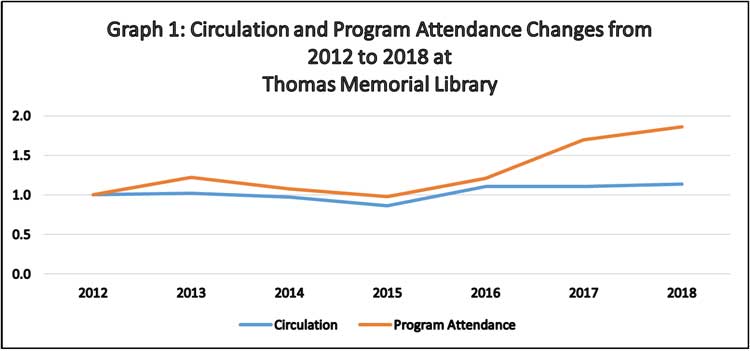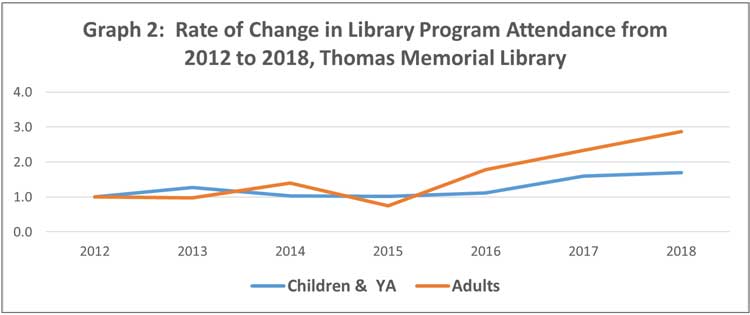Return on Investment in Our Library
December 2019
Most people see public libraries as a vital part of a community’s infrastructure – a necessity rather than just “nice to have” service. Public library advocates often justify support through taxes and/or donations based not solely on altruism but also on the tangible economic return on investment for their families and the community. 2 Understanding the nature of the benefits of The Thomas Memorial Library (in Cape Elizabeth, ME) and the return on investment is important because the library provides services that are important to our future and especially to our children’s future.
This article shows three aspects of “return on investment” for our library.
- The return on investment analysis that shows our library is an excellent investment;
- How to easily calculate the net savings and the return on investment for your family (in about 10 minutes); and
- The reasons the true value of the library is undoubtedly much higher than these rates of return estimates show.
NOT EVERY VALUE CAN
BE MEASURED IN DOLLARS
“Return on investment” analyzes whether the benefits of the library (measured in dollars) are greater than the library’s financial cost.
The monetary estimates of the benefits reported here leave out such important benefits as the value of a child learning to love reading and learning, and understanding the library is a resource for this.
However, even counting only the benefits which can be measured in dollars (i.e. savings to patrons) results in very high rates of return.
I. The Return On Investment For Our Library In 2018.
For the annual investment in the library by the Town of Cape Elizabeth and the Thomas Memorial Library Foundation, the library returns $2.9 million in benefits to the town’s citizens. The Town invested almost $572,000 from the general fund in the Thomas Memorial Library operations, combined with private donations from our library foundation. This translates into $2.4 million in net savings to Cape Elizabeth citizens and a rate of return of over five dollars ($5.14) for every dollar of annual investment by the Town and the Thomas Memorial Library Foundation. These estimates are based on the Library Value Calculator estimates of savings to library users and the annual investment by the Town of Cape Elizabeth and the Thomas Memorial Library Foundation for 2018. 3 (The calculations for the entire Town are the same as for a family except it uses aggregate data from all library users as reported to the state.) If our private investments gave these high returns, we would be ecstatic.
The monetary benefits are the savings to library users as they borrow books and other items, use computers or attend programs. While most of the benefits come from the traditional role of the library (circulation or loaning out books, e-books, CDs, interlibrary loan books), the number of programs delivered at the library is changing rapidly as shown in Graph 1.

Source of Data: Maine State Library from data submitted the Thomas Memrial Library.
(https://www.maine.gov/msl/libs/data/annualreportstats.shtml).
The graph shows that both circulation and program attendance increased.
Circulation increased about 10% from 2012 to 2018.
Program attendance almost doubled, up by 90% from 2012 to 2018.
This rise in both circulation and programming is gratifying and was predicted by the many individuals who invested in the new library. The dip in circulation in 2013 and 2014 was due to the library renovation and its temporary housing during 2014.
Graph 2 shows the rate of growth in children/young adult programs and adult programs.

Source of Data: Maine State Library from data submitted the Thomas Memorial Library.
(https://www.maine.gov/msl/libs/data/annualreportstats.shtml).
II. Your Family’s Return On Investment In The Library
Your family’s savings when using the library and return on investment in our library is both easy and fun to estimate. You can estimate this as outlined in the three steps below. It takes about 10 minutes for a family. (Only you can calculate this for your family since data on library use by individual users is not available to the public.)
Hypothetical Examples: Here are three examples of the results at different stages of a family’s life as shown in Table 1.
Stage one: Joe, a single 25 year old, borrows 12 books a year (saving $17 on average), and saves $204 per year.
Stage two: The next year he marries Susan and they have a child, Joe Jr. When Joe. Jr. is six months old, Susan takes him to story time once per week. In the following year, Joe and Susan save $336 by Joe. Jr. attending the free story time 48 times (at $7 per time). They also save $1,152 from borrowing 2 children’s books on each of their 48 visits to the library (at $12 savings per book borrowed). That year, Joe and Susan are swamped with tending Joe Jr and don’t do any extra reading. So the total savings for the family is $1,488.
Stage three: The next year, however, Joe Jr. sleeps through the night and the parents have settled in. Now each parent reads an average of one book per month from the library, saving $408. Joe Jr’s parents, continue to take him to story time and getting 2 books a trip, saving $1,488 for a total family savings of $1,896.
Joe and Susan’s net savings (and their return on investment) of using the library depends on what they pay in property taxes that go to the library. In the first year, Joe owned a home that was had a Town property evaluation of $150,000. Since only about 32 cents per $1000 went to the library, this meant his taxes were about $48 per year for the library. When Joe and Susan married, they moved into a $300,000 home and their taxes for the library doubled to $96 per year for the library.
Table 1: Joe and Susan’s Net Savings and Return on Investment
Hypothetical Examples | Total Savings from using the Library Per Year | Property Taxes per Year (Library’s Share) | Net Savings per Year | Return on Investment per Year |
Stage | 1 | 2 | 3 | 4 |
1- Joe is single | $204 | $48 | $156 | $4.25 |
2 – Joe married Susan, and Joe Jr. arrives. Only Joe Jr. uses library. | $1,488 | $96 | $1,392 | $15.50 |
3- Susan, Joe and Joe Jr.
| $1,896 | $96 | $1,800 | $19.75 |
Columns 1 and 2 were estimated in the manner described just below using the hypothetical data described above.
Column 3 is calculated by subtracting column 2 (property taxes) from column 1 (total savings).
Column 4 is calculated by dividing column 1 by column 2.
Table 2 adds one column (2b) that shows a $100 donation to celebrate the 100 birthday of the Thomas Memorial Library. Naturally that reduces the net savings per, there still are savings in all three examples, ranging from $56 for Joe along to $1,700 when Susan, Joe and Joe Jr. are all library users as outlined earlier. Also the dollar return per dollar cost to the family (called return in investment by libraries), ranges from $1.38 savings per dollar they spend to $9.67 saved per dollar they spend on the library.
Table 2: Joe and Susan’s Net Savings and Return on Investment with $100 Donation to the Thomas Memorial Library Foundation
|
Hypothetical Examples with $100 donation |
Total Savings Per Year |
Property Taxes per Year (Library’s Share) |
$100 Donation |
Net Savings per Year |
Return on Investment per Year |
|
1 |
2 (a) |
2 (b) |
3 |
4 | |
|
Joe Only |
$204 |
$48 |
$100 |
$56 |
$1.38 |
|
Joe Jr. Only. |
$1,488 |
$96 |
$100 |
$1,292 |
$7.59 |
|
Susan, Joe and Joe Jr. |
$1,896 |
$96 |
$100 |
$1,700 |
$9.67 |
III. The “Library Value Calculator” Return On Investment Understates The Full Value Of The Library.
Estimating Your Family’s Net Savings and Return on Investment: To estimate the net savings and return on investment ratio for your family, simply take these four steps:
- Put the number of times in the past year (or past month) that you and your family members used library services into the “Library Value Calculator” to estimate your savings (benefits). The calculator is on the Thomas Memorial Library Website at (https://www.thomasmemoriallibrary.org/library-value-calculator-2/).
- Use the value of your property tax paid to Cape Elizabeth and multiple it by .017 (that is 1.7 percent) to get the amount you’d pay per year. If Joe and Susan also contributed $100 to Thomas Memorial Library Foundation for the 100 year birthday of our library, then add this $100 (or whatever you donate) to your property tax.
- For net savings, subtract step 2 (property taxes for library) from step 1 (your savings per year)
- For return on investment divide the results from step 1 by step 2.
The full value of the library to you and your family is not captured by the Library Value Calculator approach to estimating benefits. The full value depends on very specific outcomes that are very difficult to measure in dollars. These benefits might include:
-
Helping your young child learn to read and love reading,
-
Exposing your teenager to new horizons and opportunities,
-
Giving you access to books and videos that you couldn’t find in local stores,
-
Providing a community living room for meeting friends,
-
Creating social opportunities along with learning ones,
-
Promoting social equity and reducing costs by sharing resources, and
-
Saving you money as you borrow books, CDs, museum passes, etc. and/or attending free programs.
The library value calculator only measures the last one of these benefits, meaning that it is a conservative estimate of the value while using the full value of the cost.
In summary, when using this estimate, it is safe to say that the results are “at least” as high as the estimated return on investment and likely much higher.
Notes
1 Both authors have backgrounds in economics. George is a professor emeritus of Applied Economics, University of Minnesota and Julia has a career of practical experience in applying economics in the business world, founding InfoTech Inc., a quantitative market research and modeling firm and writing newsletters and blogs to her real estate clients at www.mainegreenbroker.com
2 OCLC. 2008. Awareness to Funding, a Study in Library Support in America. Dublin, OH. Page 6-12. https://www.oclc.org/research/publications/2008/funding.html
3 The data for estimating the Thomas Memorial Library benefit cost ration came from the Library Value Calculator (http://www.thomasmemoriallibrary.org/library-value-calculator-2/), data our library’s reports to the Maine State Library (https://www.maine.gov/msl/libs/data/annualreportstats.shtml) and data from the Town of Cape Elizabeth on property taxes.
Questions? If you have questions or comments, send us a note at stories.tmlf@gmail.com.
